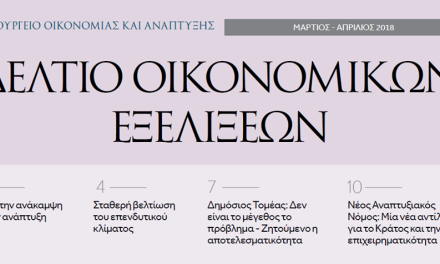The Byzantine and Christian Museum of Athens is hosting the exhibition “40 years since the signing of the Treaty of Accession of Greece to the European Communities” from November 25th to December 19th; the exhibition is organized by the Service of Diplomatic and Historical Archives of the Greek Ministry of Foreign Affairs in cooperation with the “Konstantinos G. Karamanlis” Foundation. The exhibits consist of written documents, photographs, and audiovisual material of a total length of 45 minutes that recount the meetings and negotiations between national and European representatives that led to the signing of the Treaty on May 28th 1979; the latter took place during an impressive ceremony at the Zappeion Hall in Athens.
The exhibition largely focuses on the emblematic figure of Konstantinos Karamanlis, while at the same time bringing to the fore the particular stakes of the 1970s that enhanced the accession of Greece to the European communities. One should note that this same period coincides with the democratic transition of Greece, as well as with those of Portugal and Spain. However, Greece led the way in this “Mediterranean” accession round, something for which Konstantinos Karamanlis is very often credited with, thanks to his efforts and personal commitment in the European community project since the 1950s. The archives located at the “Konstantinos G. Karamanlis” Foundation and the Ministry of Foreign Affairs offer important resources regarding the leading actors and the contours of European integration during this period (Minotos 2008, Tomai 2006).
A particular historical context
As noted by Eirini Karamouzi, the signing of the Treaty in 1979 signaled the culmination of a long process begun in the late 1950s and early 1960s, when Greece became the first country to be granted association status in 1961 (2017). Following the fall of the military junta and the restoration of parliamentary democracy in 1974, PM Konstantinos Karamanlis submitted Greece’s accession application in 1975, with the aim of solidifying the country’s position within the western geopolitical framework and consolidating its governance and market-economy system. This divergence from the traditional affiliation with the USA signaled a novel “multilateralism” which would have seemed practically difficult a few years before, but became necessary in the 1970s, given the anti-USA and anti-NATO resentment of the majority of Greek people in the aftermath of the Turkish invasion of Cyprus in 1974 and the 1967-1974 military dictatorship (Karamouzi 2017).
1979 also stands as a first major turning point vis-à-vis the European perspective for the politics of Andreas Papandreou and the social-democratic opposition party of PASOK; the latter party, which rose to power in October 1981, a few months after the official entry of Greece into the European Communities on 1st January 1981, was to fully adapt to the European norm starting from the mid-1980s (Nafpliotis 2018).
It is also fitting to note that, as Karamouzi suggests (2017), the accession of Greece to the European Communities in 1979 constituted a significant milestone for the history of European integration itself; firstly, the entry of Greece, followed by Spain and Portugal, signaled a gradual change in the characteristics of EEC members –newcomers were also newly democratized and less developed states rather than established market economies and democracies; secondly, this “Mediterranean” accession round was largely conditioned by geopolitical calculations within the context of the Cold War, given the fluid political situation in these recent democracies with their multiple political potentialities (Karamouzi 2017, also Klapsis 2014). In fact, this period coincided with the reduction of British troops and an increased soviet presence in the Mediterranean, while at the same time revealed the limits of American geopolitical reach in the region (Karamouzi 2017).
The emergence of democratic reasoning in Community identity
On a discursive level, De Angelis and Karamouzi (2016) suggest that the conjuncture of the 1970s, as exemplified in the case of Greek accession, also signals the gradual introduction of a primarily political reasoning in the construction of a European community identity, at least in comparison with the European project’s initial economic principles since the 1950s. The period of the Greek dictatorship and the ambivalent or problematic position of certain powerful European states in regards to the junta allowed the EEC to emerge more or less as a discursive guarantor of democratic rights in the manner of the Council of Europe. When it came to Greece, political (that is, non economic) reasoning and democratic rhetoric also met the particular imagery and symbolism that Greece bore as the so-called “cradle of democracy” (De Angelis et Karamouzi 2016, also Klapsis 2014, Minotos 2008). Academic debate still persists regarding the actual motivations of European and Greek leaders during this period and today it seems that analyses stressing the geopolitical concerns behind Greek accession outnumber arguments pointing to short-term “economic” considerations (for example see Klapsis 2014).
Originally published on Grecehebdo.gr. Adapted to English by Dimitris Gkintidis
D. G.
TAGS: ATHENS | EU INSTITUTIONS | EU POLITICS | HISTORY














